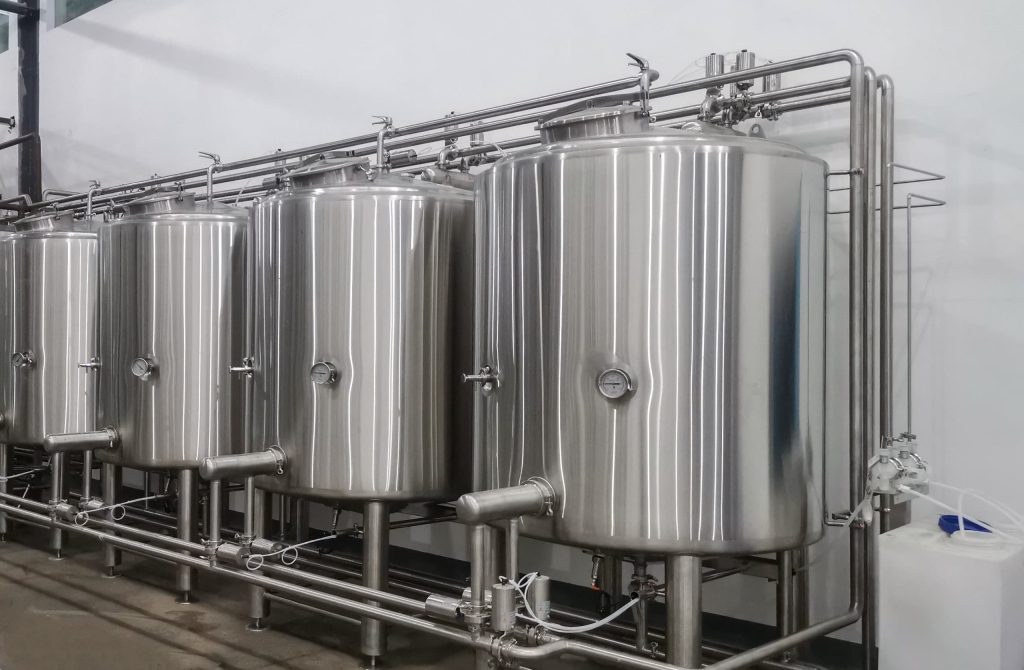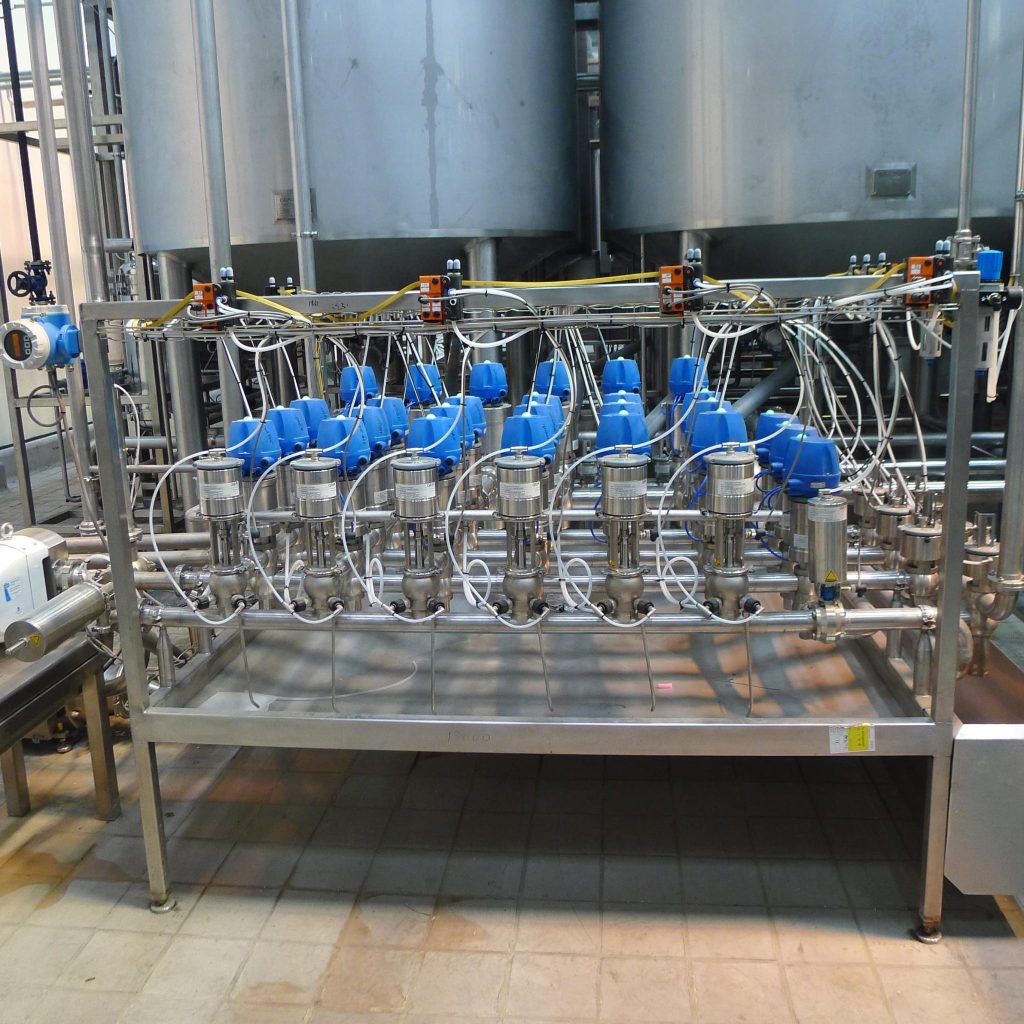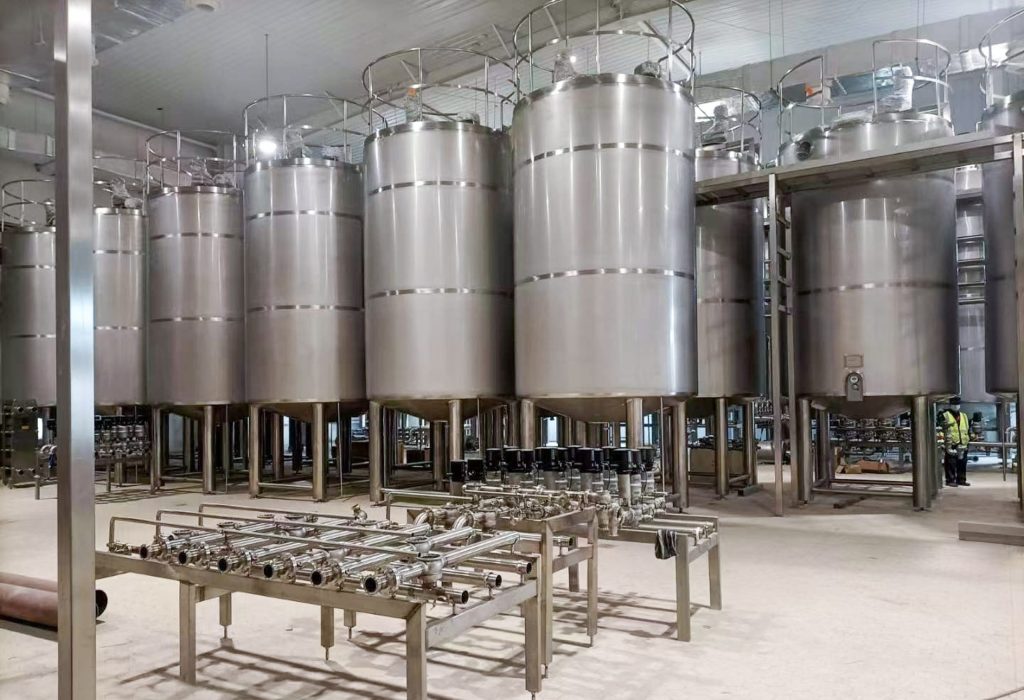Introduction

In modern industrial settings, maintaining high standards of hygiene and operational efficiency is critical. One of the most effective strategies for achieving these goals is through Clean in Place (CIP) design. This process involves the automated cleaning of equipment and pipelines without disassembly. This blog will delve into the principles of CIP design, its benefits, implementation strategies, and its impact on both hygiene and operational efficiency.
Understanding Clean in Place Design
Clean in Place design is a system used in industries such as food and beverage, pharmaceuticals, and chemicals to clean equipment and pipelines without having to disassemble them. This method helps to maintain the cleanliness of equipment and pipelines, reduce downtime, and ensure compliance with health and safety regulations.
The Principles of Clean In Place Design
CIP systems operate based on several key principles:
- Automated Cleaning: CIP systems automate the cleaning process, which minimizes human intervention and reduces the risk of contamination.
- Recycling of Cleaning Agents: CIP systems often recycle cleaning agents to minimize waste and lower costs.
- Cycle Control: CIP systems control cleaning cycles precisely, ensuring thorough cleaning and sanitization.
- Monitoring and Validation: CIP systems include monitoring and validation processes to ensure that the cleaning process meets required standards.
Components of CIP Systems
CIP systems typically consist of several components:
- Cleaning Solution Storage: Tanks or containers for storing cleaning agents.
- Pumps: To circulate cleaning solutions through the equipment.
- Heat Exchangers: To heat cleaning solutions if necessary.
- Control Systems: To manage cleaning cycles and monitor performance.
- Pipes and Valves: To direct cleaning solutions through the system.
Benefits of Clean in Place Design
Implementing a CIP system offers numerous benefits:
Enhanced Hygiene and Safety
- Reduced Contamination Risk: Automated cleaning processes reduce the risk of contamination compared to manual cleaning.
- Consistent Cleaning Quality: CIP systems provide uniform cleaning results, ensuring all parts of the equipment are cleaned thoroughly.
- Compliance with Regulations: CIP systems help industries meet stringent hygiene and safety standards.
Improved Efficiency and Cost Savings
- Reduced Downtime: CIP systems minimize downtime by eliminating the need for disassembly and reassembly.
- Lower Labor Costs: Automation reduces the need for manual labor, leading to cost savings.
- Resource Efficiency: Recycled cleaning agents and optimized water usage reduce operational costs.
Environmental Benefits
- Reduced Water Usage: CIP systems are designed to use minimal water, contributing to environmental sustainability.
- Efficient Chemical Use: Recycling cleaning agents reduces chemical waste and environmental impact.
Implementation Strategies for Clean In Place Design
Implementing a CIP system requires careful planning and execution. Here are key steps to ensure a successful implementation:
Assessing Needs and Objectives
- Evaluate Equipment: Determine the types of equipment and pipelines that require cleaning.
- Define Cleaning Requirements: Identify the cleaning standards and frequency needed for each piece of equipment.
- Set Objectives: Establish clear objectives for the CIP system, including hygiene standards, efficiency targets, and cost savings.
Designing the CIP System
- Select Components: Choose appropriate components for the CIP system, including pumps, tanks, and control systems.
- Develop Cleaning Cycles: Design cleaning cycles that meet the specific needs of your equipment and processes.
- Integrate with Existing Systems: Ensure the CIP system integrates seamlessly with existing equipment and processes.
Training and Maintenance
- Train Personnel: Provide training for staff on operating and maintaining the CIP system.
- Regular Maintenance: Implement a maintenance schedule to ensure the CIP system operates effectively and efficiently.
Case Studies of Successful CIP Implementations
Food and Beverage Industry
In the food and beverage industry, CIP systems have revolutionized cleaning processes. For example, a major dairy producer implemented a CIP system that reduced cleaning time by 50% and achieved a 30% reduction in water and chemical usage.
Pharmaceutical Industry
A pharmaceutical company adopted a CIP system to meet stringent cleanliness requirements for their production lines. The system enabled them to maintain compliance with regulatory standards while reducing downtime and labor costs.
Key Metrics for Evaluating CIP Performance

To assess the performance of a CIP system, consider the following metrics:
| Metric | Description | Target Value |
|---|---|---|
| Cleaning Time | Duration required to complete a cleaning cycle | 30 minutes |
| Water Usage | Amount of water used per cleaning cycle | 200 liters |
| Chemical Usage | Quantity of cleaning agents used | 5 liters |
| Downtime Reduction | Decrease in equipment downtime due to CIP implementation | 40% reduction |
| Compliance Rate | Percentage of cleaning processes meeting regulatory standards | 100% |
Conclusion
Clean in Place design plays a crucial role in enhancing hygiene and efficiency in industrial settings. By automating the cleaning process, reducing downtime, and improving resource efficiency, CIP systems contribute significantly to operational success. The implementation of a well-designed CIP system can lead to substantial benefits, including cost savings, environmental sustainability, and regulatory compliance.
Investing in a CIP system is a strategic decision that can drive improvements across various aspects of industrial operations. As industries continue to prioritize hygiene and efficiency, clean in place design will remain a vital component in achieving these goals.
FAQ
What is Clean in Place Design?
Clean in Place design refers to a system used for cleaning equipment and pipelines automatically without disassembly. It ensures effective cleaning while minimizing downtime and human intervention.
How Does CIP Improve Hygiene?
CIP systems enhance hygiene by automating the cleaning process, reducing contamination risks, and ensuring consistent and thorough cleaning of equipment.
What Are the Key Benefits of Clean In Place Design?
Key benefits of clean in place design include improved hygiene, reduced downtime, lower labor costs, resource efficiency, and environmental sustainability.
How Do I Implement a CIP System?
Implementing a CIP system involves assessing needs, designing the system, integrating it with existing processes, and training personnel. Regular maintenance is also crucial for optimal performance.
Can CIP Systems Be Used in All Industries?
CIP systems are widely used in industries such as food and beverage, pharmaceuticals, and chemicals. However, their applicability depends on the specific cleaning requirements of each industry.
What Metrics Are Important for Evaluating CIP Performance?
Important metrics for evaluating CIP performance include cleaning time, water usage, chemical usage, downtime reduction, and compliance rate.

